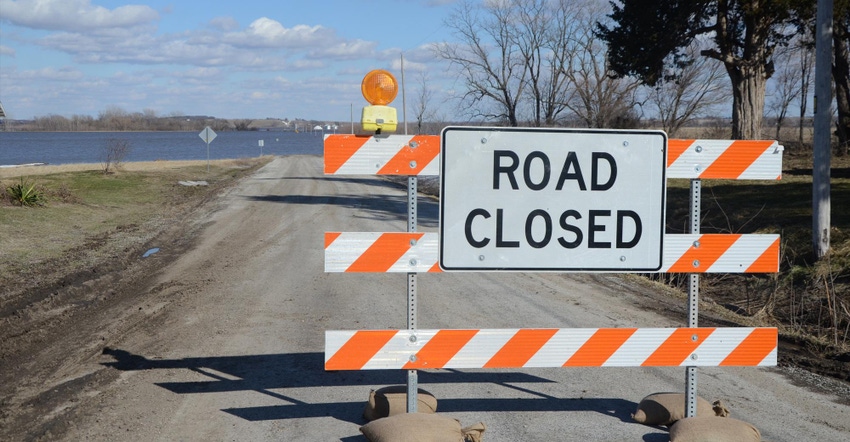March 22, 2019

Due to widespread flooding, more than half of Iowa’s 99 counties now have disaster proclamations. On March 21, Gov. Kim Reynolds issued disaster declarations for nine more counties, bringing the total to 52 due to rising water in rivers and streams.
Having a county under proclamation can help affected residents financially. The proclamation unlocks funding through the Iowa Individual Assistance Grant Program, which provides grants of up to $5,000 for certain households that meet income requirements.
This spring’s flooding has created numerous problems for farmers, other rural homeowners and in-town residents alike. One of those shared concerns is the safety of drinking water that’s drawn from private wells supplying farms and homes.
Test flooded wells
Even if your home was not damaged by flooding, your private well may need attention, cautions Shawn Shouse, an Iowa State University Extension ag engineer. Wells that have been submerged beneath floodwater or high groundwater tables should be disinfected and tested for safety before using water from them for drinking or food preparation.
“Most wells do not have watertight caps, so bacteria, silt and other pollutants are likely to enter them if they are submerged,” Shouse says. “Wells located near streams or drainage ditches are particularly vulnerable to flooding following rapid snowmelt or heavy rainfall, but wells located away from surface water also can become submerged if they are located inside leaky frost pits that become flooded as shallow water tables rise during wet seasons.”
To reduce the risks of well contamination caused by submergence, wells should be constructed with watertight casing that extends at least 1 to 2 feet above ground or above the highest known flood level at that location, Shouse says. In addition, earth should be mounded around the casing to prevent ponding of contaminated water around the well.
Shock chlorination
If your well has been flooded, disinfect it using a procedure called shock chlorination. Experienced and properly equipped do-it-yourselfers may be able to shock-chlorinate their own wells, but the procedure requires removing the well cap, and dealing with electrical wiring and piping that may obstruct the interior of narrow diameter wells. A well driller or pump installer would have the professional training and equipment to perform the job thoroughly and safely.
After the well is disinfected, a water sample must be tested for coliform bacteria to ensure that the disinfection procedure was effective and the water is again safe to drink. Until test results indicate that water from the well is safe for human consumption, use bottled water from a safe source for drinking and food preparation. If bottled water is not available, small batches of clear (not cloudy) well water can be disinfected by vigorously boiling it for at least five minutes.
More information can be found in the following ISU Extension publications: Good Wells for Safe Water, PM 840; Shock Chlorinating Small Water Systems, PM 899; and Sampling Your Drinking Water, PM 1335.
Cleanup after flooding
ISU Extension maintains a website that includes many aspects of dealing with flood-related issues, from farm and home cleanup of flooding, mold, structural damage, etc., to who to talk to about stress and business-related issues.�
There’s also a link that provides a list of USDA FSA Disaster Assistance Programs including the Livestock Indemnity Program that may be able to assist with extreme weather-related livestock losses. And USDA’s Emergency Assistance for Livestock Program may be able to assist with flood-related feed losses, such as hay bales or other forage sources lost or damaged in a flood. For information, visit FSA.
About the Author(s)
You May Also Like






